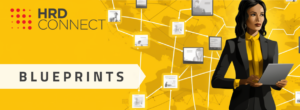Consciousness is a Leadership Requirement: How Conscious Are You?
- 5 Min Read
At the HRD Summit 2019 in Birmingham, Bridge Partnership’s Sophie Ireland and Jane Sassienie, Global Directors, ran a fascinating CoLab entitled “consciousness in a leadership environment. The idea was to encourage collaborative thought and debate to generate genuinely useful, applicable leadership takeaways for the attendees.
- Author: Charlie Braithwaite
- Date published: Feb 20, 2019
- Categories

 Leadership is changing
Leadership is changing
Sophie and Jane opened the CoLab by asking the audience why consciousness is a modern leadership requirement. It was posited that not only do leaders need to listen, hear and respond appropriately to their colleagues, but also that you impose your mental model on the world if you’re unconscious of others’ views. Leaders need to lead people with starkly different views, and so consciousness is a key factor in ensuring that everyone’s perspective is heard.
In light of this changing view of leadership, Sophie and Jane say that many businesses appear to be in over their heads. No longer are leaders simply imposing their will on a situation; they need to upgrade their operating system and leadership habits to properly get the best out of everyone. Indeed, they emphasised that the best leaders deliberately avoid a fixed mindset, instead always asking “what’s needed now?”.
You can’t simply turn consciousness on
The audience was shown a video from Sussex Safer Roads encouraging people to embrace life by wearing their seatbelt. The video leant heavily on emotional triggers, showing the main character being embraced by his family as if they were his seatbelt as he pretended to drive before crashing, making you think about those who you would leave behind in the event of an accident.
Everyone was then asked to consider what they noticed in the first video and to think about what that tells us about ourselves. Were we more focussed on the crash than on the familial message? What was it that we connected with?
Sophie and Jane explained that consciousness requires making a choice and putting in the effort. They then played a powerful video showing a montage of stunning places all around the world, accompanied by beautiful music.
When asked if they were more conscious in the first or the second video, the audience was divided – some said that by trying to be conscious they felt an overwhelming responsibility to care for the planet, with some even experiencing a physical reaction in response, whilst others found it harder to be conscious than during the seatbelt advert.
Sophie and Jane highlighted that the main takeaway is that it’s hard to simply turn consciousness on, you need to constantly bring yourself back to being conscious. It’s not as easy as flicking a switch – demonstrating the importance for leaders to constantly evaluate their own levels of consciousness.
Consciousness needs to precipitate action
However, consciousness is not the be-all and end-all of leadership. In fact, if you’re conscious but unwilling to act, then you’re merely a spectator. Expanding your consciousness can take two forms: going out (doing more in the external environment) or going in (looking deep within ourselves). Both are highly valuable but should only act as the precursor to action rather than the end product.
Sophie and Jane then asked the audience to partner up with someone on their table and take them through a problem they currently had, whether it was personal or professional. They were asked to first explain the problem, then explain how they were doing before inviting the listener to give their perspective.
Perspectives affect perception
The responses to this activity were overwhelmingly positive; some said that it highlighted how your perception of a problem is always coloured by your own assumptions, and others noticed that in the act of storytelling you can almost sense when you’re approaching the truth, or what you really think, by looking at your changes in energy levels.
Jane responded by agreeing that our problems and habits are based on our perspectives – therefore, if we can’t find a solution then the best way is to try looking at it from another perspective. Am I now able to see the problem more clearly? Does that perspective give me a better insight into solving it?
Develop a daily habit
Sophie reiterated that as consciousness needs to be a constant practice, it’s worth developing a daily habit. Some members of the audience spoke about the positive benefits of meditation, yoga and counselling, and Sophie responded by affirming that focussing on a practice can help redevelop your brain: help you make decisions, see things from new perspectives and lower your stress levels.
As a last takeaway, the audience was asked to write for two minutes non-stop. There was no specific subject or focus, but rather they were able to write about whatever it was that they pleased. This process, called the artist’s way, is used to unblock creativity – it tells your mind to start downloading whatever’s in the unconscious.
In conclusion, Sophie and Jane emphasised 5 points:
- Consciousness requires making a choice and putting in the effort
- And we can all become truly conscious when we choose to
- Leadership happens when awareness meets action
- Raising levels of consciousness can change the conversation and outcome
- Develop this with practice
A massive thank you to Sophie and Jane for running such an engaging and entertaining CoLab!








